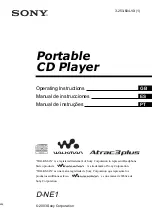
Windows Installer Editor Reference
500
Windows Installer and .NET Technologies
private directory for the exclusive use of the application. A version of the assembly
is also globally registered on the system and made available for any application that
binds to it. The global version of the assembly can be the version installed with the
application or an earlier version.
I thought .NET meant I could use XCOPY to install applications without
registration. Why do I need to build a Windows Installer installation?
For a .NET application that uses only managed code and private assemblies, the
installation process can be as simple as copying files to the destination computer. Most
developers, however, still need to create a compressed, single-file installation that is
easy to deploy and that provides a friendly interface to the end user.
.NET applications that use shared assemblies, or that have a mix of managed and
unmanaged code, cannot be installed with XCOPY. You should use the Windows Installer
service for installations that do any of the following:
z
Install COM files
z
Install assemblies to the Global Assembly Cache
z
Require user information during the installation
z
Require security
z
Create a shortcut
z
Require elevated privileges to install on a locked-down computer
By creating a Windows Installer installation for your .NET applications, you can take
advantage of the services Windows Installer provides: installation, repair, and removal
of assemblies; roll back; install-on-demand; patching; and advertisement.
How does Windows Installer Editor support .NET installations?
Windows Installer Editor lets you install .NET assemblies into the Global Assembly
Cache, or as side-by-side or private assemblies. It also lets you create mixed
installations by registering .NET assemblies with COM.
If the .NET Framework is installed on your computer, Windows Installer Editor can
automate the process as follows:
z
Find all files in multifile assemblies and add them to the installation.
z
Scan for assembly dependencies and add them to the installation.
z
Determine attributes for registering the assembly files and add them to the
MsiAssemblyName table.
z
Add registry keys for COM interop.
See also:
About Microsoft .NET Technology
on page 497
Requirements for Creating a .NET Installation
on page 501
Creating a .NET Installation When You Have the .NET Framework
on page 242
Creating a .NET Installation Without the .NET Framework
on page 243
For information on setting the required .NET Framework version, see
Setting a
Requirement on the System Requirements Page
on page 165
















































